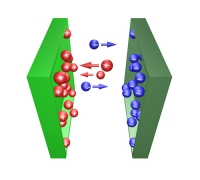Shielding principles
High frequency electromagnetic waves(HF/EMF)
High frequencies can be shielded at electrically highly conductive surfaces (usually metallic) by reflection or by absorption in various construction materials.
Reflection Attenuation
In reflection, the electromagnetic wave is reflected on electrically highly conductive materials according to the same principle as light reflection with, for example, a mirror. Special paints, nonwovens, fabrics and wallpapers are used as reflection materials.
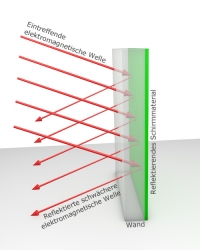
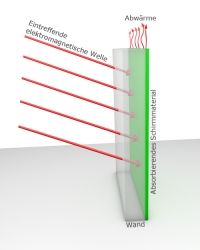
Absorption attenuation
This shielding principle is based on the fact that the energy of high-frequency electromagnetic waves is absorbed by a special material and converted into heat. These materials must have pronounced absorptive properties. Solid building materials such as concrete, brick, clay, etc. are suitable. However, lightweight building materials such as wood have low absorptive properties.
Low-frequency alternating electric fields(EWF)
Low-frequency shielding is achieved by simply laying and processing electrically conductive building textiles and then grounding them. Suitable materials are nonwovens.
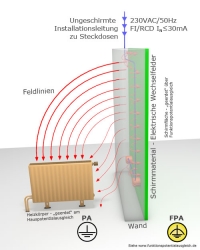
Low-frequency alternating magnetic fields(EMF)
The shielding of DC magnetic fields and low-frequency AC fields (frequencies < 5 kHz) depends primarily on the material thickness, the geometric arrangement, and the permeability number of the shielding material. Shielding material should have the highest possible permeability to be able to absorb and redirect the magnetic flux well. Conventional construction materials as well as metal sheets made of aluminum, copper or brass, for example, are unsuitable. However, weakening of low-frequency magnetic fields can be achieved by the following construction materials:
- highly concentrated magnetite powder mixed with the exterior plaster
- iron sheet panels as facade cladding
- magnetically very good conducting metal alloy such as mumetal
Furthermore, the shielding material should be as thick-walled as possible. In addition, small volumes are in principle better shielded. Alternating magnetic fields of higher frequencies (> 10 kHz) can be shielded by all metals with good electrical conductivity, including aluminum, copper and brass.
In cables and lines shielded against alternating electric fields, the individual wires are additionally twisted together. This twisting, in addition to the necessary uniform loading of the phase/neutral conductor pairs (outgoing current = return current), effectively reduces the alternating magnetic fields.
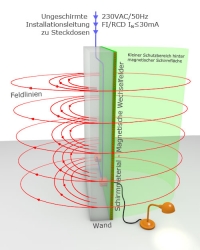
Electrostatic Fields / Charging(ESF)
All bodies have a large number of electrical charges. To charge a body, one must either transfer charges to it or take charges away from it so that there is no longer an equilibrium between electrons and protons.
Positive charge:
Removal of electrons from a body.
The body then has more positive (protons) than negative charges.
Negative charge:
Addition of electrons to the body.
The body then has more negative (electrons) than positive charges.
DC electric fields (electrostatics) are measured in the following units (~50% RH):
- Surface tension in volts (V)
- Discharge time in seconds (s)
Tips to prevent static charge:
- Increase humidity (50-60% RH)
- use textiles interwoven with metal threads
- natural leather soles on shoes
